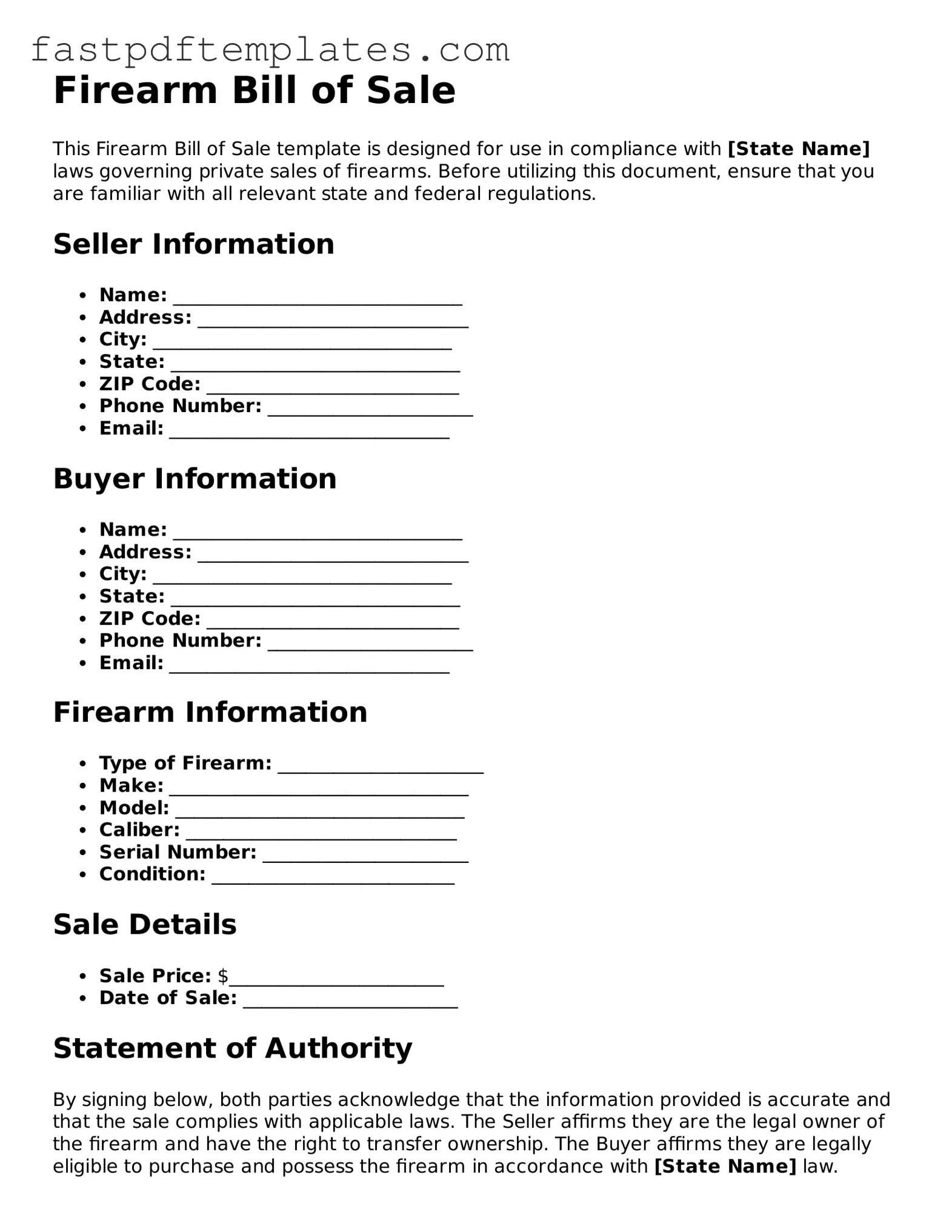The Firearm Bill of Sale form is similar to a Vehicle Bill of Sale. Both documents serve as proof of transfer of ownership from one party to another. When someone sells a vehicle, they complete a bill of sale to document the transaction. This document typically includes details such as the vehicle's make, model, year, and Vehicle Identification Number (VIN). Similarly, a Firearm Bill of Sale outlines the specifics of the firearm, including its make, model, and serial number, ensuring that the buyer has clear ownership records.
Another document akin to the Firearm Bill of Sale is the Personal Property Bill of Sale. This form is used for various types of personal property, such as electronics or furniture. Like the firearm version, it records the details of the item being sold, the sale price, and the names of the buyer and seller. Both documents aim to protect the interests of both parties by providing a written record of the transaction, which can be important for legal purposes or future disputes.
The Real Estate Purchase Agreement shares similarities with the Firearm Bill of Sale in that both are legally binding contracts. A real estate purchase agreement outlines the terms of a property sale, including the purchase price, closing date, and any contingencies. While the Firearm Bill of Sale is more straightforward, both documents require signatures from both parties to confirm the agreement and ensure that the transaction is legitimate.
A Lease Agreement is another document that functions similarly to a Firearm Bill of Sale in terms of establishing terms between parties. This document lays out the conditions under which one party rents property from another. Just as a Firearm Bill of Sale details the transfer of ownership, a Lease Agreement outlines the rights and responsibilities of both the landlord and tenant, ensuring that both parties understand their obligations during the rental period.
The Gift Receipt also resembles the Firearm Bill of Sale, particularly when a firearm is given as a gift. A Gift Receipt serves as a record that one person has given an item to another without any exchange of money. While it does not transfer ownership in the same way a bill of sale does, it provides documentation of the gift, which can be important for tax purposes or future ownership verification, similar to how a Firearm Bill of Sale documents the transfer of ownership.
Finally, a Business Asset Purchase Agreement can be compared to the Firearm Bill of Sale in that both involve the transfer of ownership of valuable items. This agreement is used when one business acquires the assets of another, detailing what assets are included in the sale. Just like the Firearm Bill of Sale, it provides a clear record of the transaction, ensuring that both parties are aware of what has been sold and under what terms, thereby protecting their interests.
